From Scratch to Savory: Embark on a Culinary Journey with Flavorful Expertise
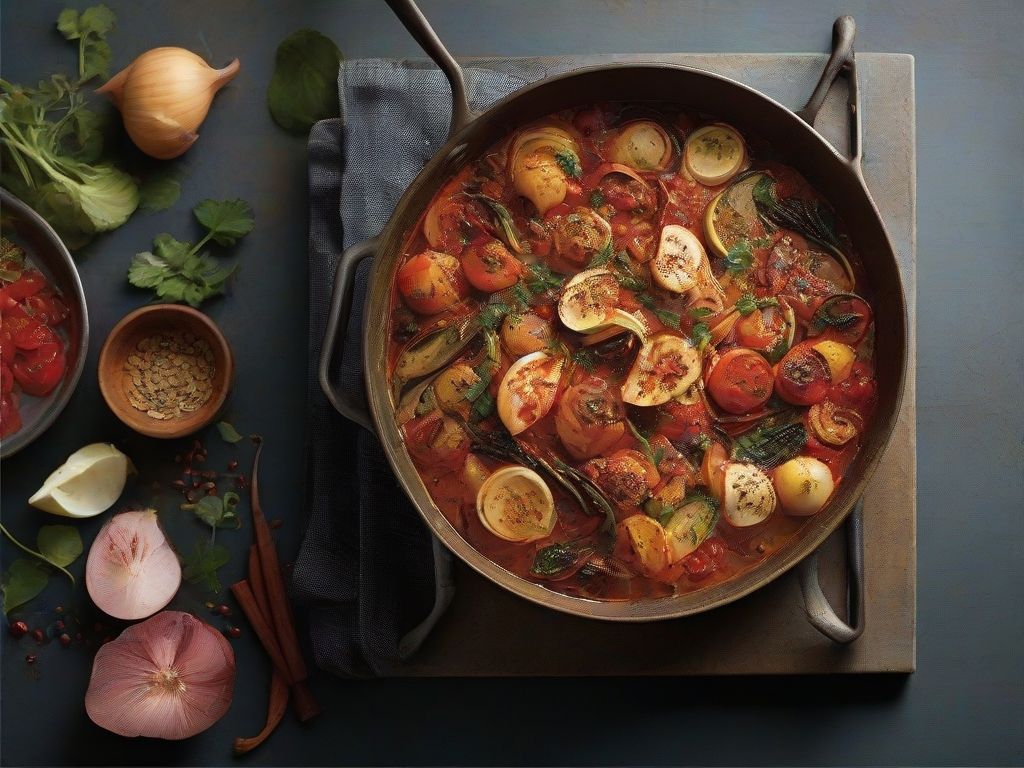
Imagine stepping into your kitchen, not as a mere spectator, but as a culinary maestro, ready to transform ordinary ingredients into extraordinary masterpieces. Picture yourself conjuring up aromas that tantalize the senses, flavors that dance on the palate, and dishes that leave your guests speechless. This is the magic of cooking from scratch, an art that empowers you to create culinary symphonies in your own home.
The Culinary Arsenal: Equipping Your Kitchen for Culinary Excellence

Your kitchen, the heart of your culinary creations, deserves to be equipped with tools that not only enhance your cooking experience but also elevate the outcome of your dishes. Just as an artist relies on their paintbrushes and a musician on their instruments, a chef's tools are the extensions of their culinary artistry.
Essential Cookware:
The foundation of your culinary arsenal lies in your cookware. High-quality pots and pans ensure even heat distribution, preventing hot spots that can scorch your food or leave it undercooked. Invest in a set of stainless steel cookware, including a saucepan, a stockpot, a sauté pan, and a frying pan. These versatile pieces will serve as the backbone of your culinary creations.
The Art of the Blade: Mastering Knife Skills
A sharp, well-maintained knife is not just a kitchen tool; it's an extension of your hand, a conduit for your culinary creativity. Mastering knife skills is an essential step in your culinary journey, transforming ingredient preparation from a chore into an art form.
Knife Grip and Posture:
The foundation of efficient and safe knife handling lies in proper grip and posture. Hold the knife firmly with your dominant hand, placing your index finger along the spine for control. Use your non-dominant hand to guide the food, keeping your fingers curled back and away from the blade. Maintain good posture, standing with your legs shoulder-width apart and your knees slightly bent for stability.
Essential Knife Techniques:
Mastering basic knife techniques is the key to effortless and efficient ingredient preparation. Practice the following techniques regularly to develop precision and control:
- Dicing: Cut vegetables into small, uniform cubes, ideal for soups, stews, and stir-fries.
- Mincing: Finely chop herbs, garlic, and other ingredients to release their flavors and add texture to dishes.
- Slicing: Cut vegetables, meat, or fruits into thin, even slices, perfect for sandwiches, salads, and garnishes.
Chopping Boards: A Hygienic Foundation
Your chopping board serves as a stage for your culinary creations, ensuring both hygiene and safety during food preparation. Invest in a durable, non-porous chopping board, such as one made from wood or plastic. Regularly clean and sanitize your chopping board to prevent the spread of bacteria.
Essential Utensils: Enhancing Your Culinary Experience
A well-stocked utensil drawer is the silent partner to your culinary endeavors. Essential utensils include:
- Spatulas: These versatile tools are ideal for flipping, stirring, and scraping.
- Whisk: Indispensable for mixing batters, sauces, and dressings.
- Tongs: Handle hot food with ease and precision using tongs.
- Measuring cups and spoons: Ensure accurate ingredient proportions for consistent results.
Knife Mastery: Transforming Ingredients with Precision and Efficiency
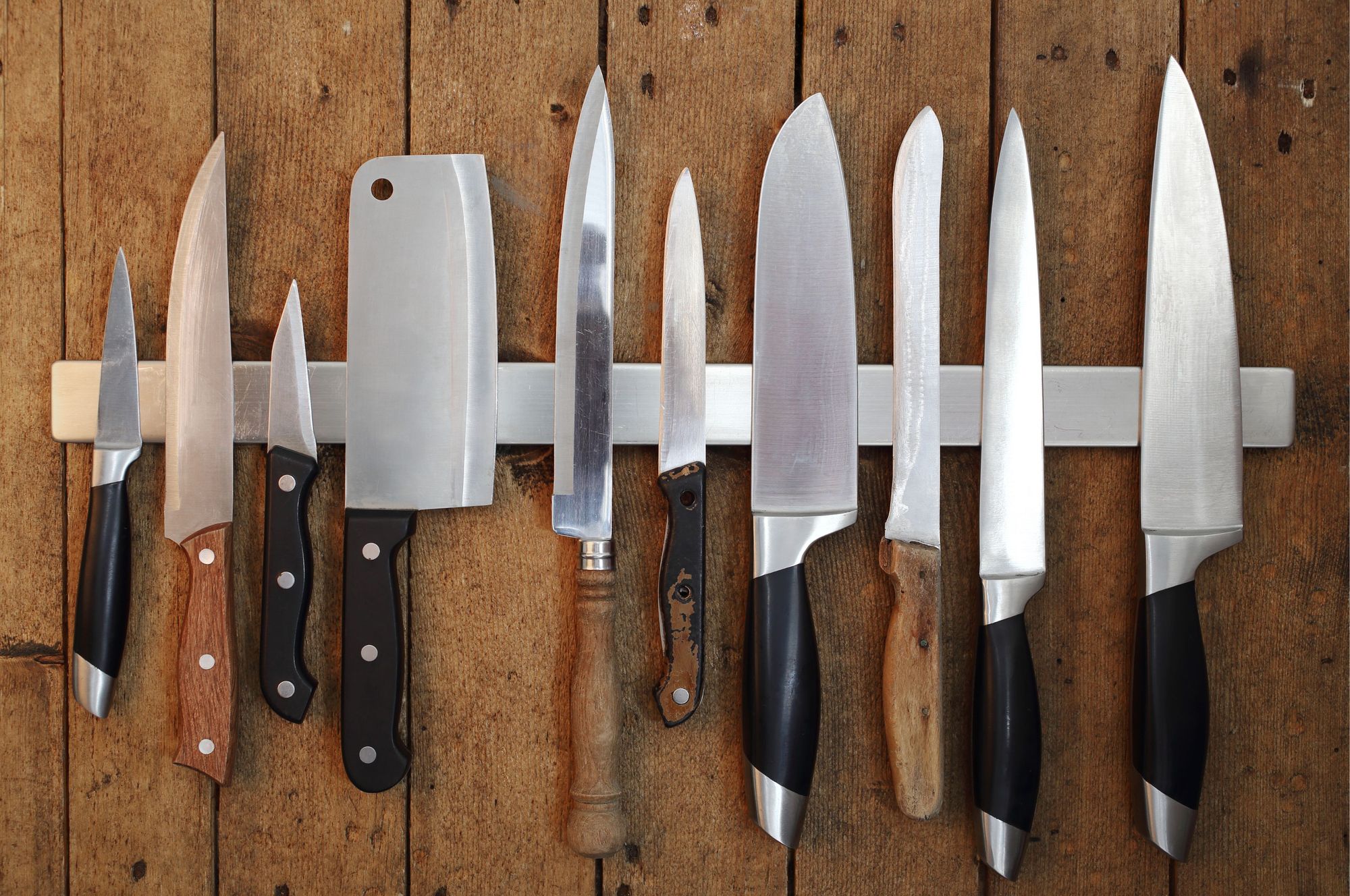
In the realm of culinary artistry, the knife reigns supreme. A sharp, well-maintained knife is more than just a tool; it's an extension of your hand, a conduit for your culinary creativity. Mastering basic knife skills is an essential step in your culinary journey, transforming ingredient preparation from a chore into an art form.
The Anatomy of a Knife:
Before embarking on your knife mastery journey, understanding the anatomy of a knife is crucial. A chef's knife, the versatile workhorse of any kitchen, typically features the following components:
- Blade: The heart of the knife, responsible for slicing, dicing, and chopping ingredients.
- Handle: Provides a comfortable and secure grip for controlled and precise knife movements.
- Tang: The extension of the blade that runs through the handle, ensuring balance and durability.
- Heel: The rounded end of the blade, used for rocking and chopping motions.
- Pointe: The sharp tip of the blade, ideal for intricate work and delicate cuts.
Knife Selection: Choosing the Right Tool for the Job
With a myriad of knives available, selecting the right one for the task at hand is essential. Consider the size and shape of the knife, the hardness of the blade, and the type of food you'll be preparing.
- Chef's Knife: An all-purpose knife suitable for a wide range of tasks, from chopping vegetables to slicing meat.
- Paring Knife: A small, versatile knife ideal for peeling fruits, removing seeds, and performing delicate tasks.
- Serrated Knife: Designed to slice through tough-skinned fruits and vegetables, such as bread and tomatoes, without tearing or crushing them.
- Santoku Knife: A Japanese-style knife similar to a chef's knife but with a slightly smaller blade, making it ideal for smaller kitchens.
Essential Knife Techniques: Mastering the Art of Cutting
Mastering basic knife techniques is the key to effortless and efficient ingredient preparation. Practice the following techniques regularly to develop precision and control:
- Dicing: Cut vegetables into small, uniform cubes, ideal for soups, stews, and stir-fries.
- Mincing: Finely chop herbs, garlic, and other ingredients to release their flavors and add texture to dishes.
- Slicing: Cut vegetables, meat, or fruits into thin, even slices, perfect for sandwiches, salads, and garnishes.
- Julienne: Cut vegetables into thin, matchstick-like strips, often used for garnishes and salads.
- Brunoise: Cut vegetables into very small, uniform cubes, typically used for delicate sauces and soups.
Knife Care: Preserving Your Culinary Companion
Proper knife care is essential for maintaining its sharpness and longevity.
- Sharpening: Regularly sharpen your knives using a honing steel or a sharpening stone to maintain their cutting edge.
- Cleaning: Wash your knives immediately after use with warm, soapy water and dry them thoroughly.
- Storage: Store your knives in a safe and organized manner, such as a knife block or a magnetic strip, to prevent damage and maintain their sharpness.
The Culinary Symphony: Mastering Essential Cooking Techniques
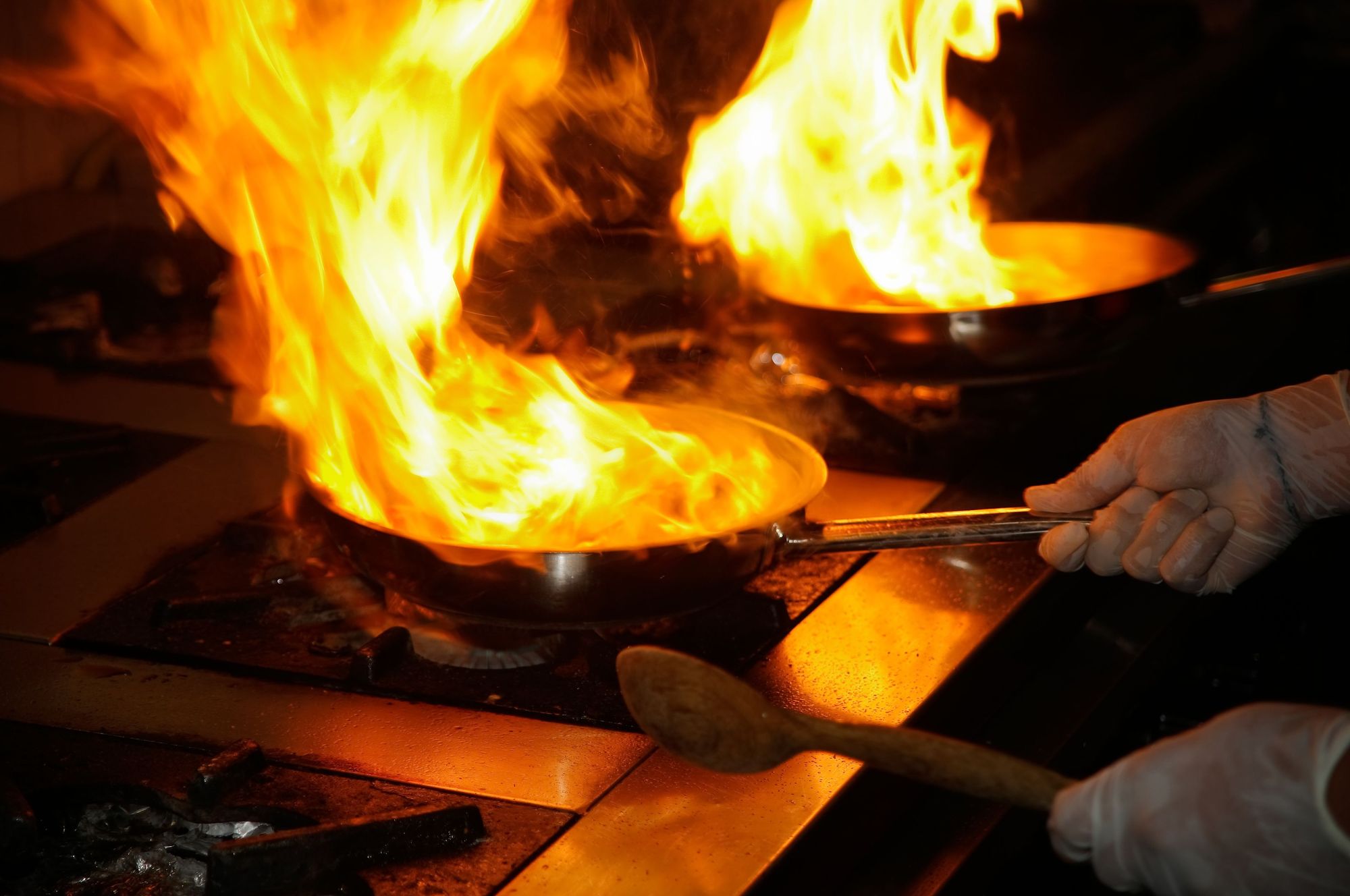
In the realm of culinary artistry, mastering essential cooking techniques is akin to a musician learning the fundamentals of music theory. Just as a symphony harmonizes individual instruments, cooking techniques blend ingredients to create a cohesive and delectable culinary experience.
Understanding Heat Transfer: The Driving Force of Cooking
Heat transfer is the fundamental principle behind cooking, dictating the transformation of ingredients from raw to cooked. Three primary methods of heat transfer govern culinary processes: conduction, convection, and radiation.
- Conduction: Heat transfer directly through contact, such as when you sear a steak in a hot pan.
- Convection: Heat transfer through the movement of fluids, such as when you poach an egg in simmering water.
- Radiation: Heat transfer through electromagnetic waves, such as when you roast vegetables under a broiler.
By understanding these principles, you can control the cooking process with precision, ensuring that each ingredient reaches the desired level of doneness while preserving its flavor and texture.
Essential Cooking Methods: The Culinary Toolbox
A repertoire of essential cooking techniques serves as your culinary toolbox, enabling you to create a vast array of dishes. Master the following techniques to expand your culinary repertoire:
- Sautéing: Cooking quickly in a small amount of hot oil, ideal for tenderizing and browning vegetables, meat, and seafood.
- Roasting: Cooking in a hot oven, often with oil, to caramelize and enhance the flavors of vegetables, meat, and poultry.
- Braising: Cooking slowly in liquid, typically with aromatics and herbs, to tenderize and infuse flavor into meat, poultry, and vegetables.
- Simmering: Cooking gently in liquid just below the boiling point, ideal for soups, stews, and sauces.
- Steaming: Cooking in a moist, hot environment without direct contact with liquid, preserving nutrients and texture in vegetables, fish, and dumplings.
Temperature Control: The Culinary Maestro's Guide
Temperature control is the culinary maestro's guide, ensuring that each ingredient reaches the desired level of doneness while preserving its integrity. Invest in a reliable kitchen thermometer to accurately measure internal temperatures of food.
- Meat Doneness: Use a meat thermometer to determine the doneness of meat, poultry, and fish. For example, medium-rare beef is cooked to an internal temperature of 145°F (63°C).
- Candy Making: Temperature control is crucial for candy making, as different sugar concentrations correspond to specific temperatures.
- Frying: Maintain proper oil temperature for frying to ensure even cooking and prevent splattering.
Troubleshooting Tips: Culinary Mishaps Averted
Even experienced chefs encounter culinary mishaps. Here are some common troubleshooting tips to keep your culinary journey smooth:
- Overcooked Vegetables: Cook vegetables just until tender-crisp to avoid overcooking and loss of nutrients.
- Dry Meat: Rest meat after cooking to allow juices to redistribute, resulting in a more tender and flavorful outcome.
- Bland Sauce: Adjust seasonings to taste, adding salt, pepper, or herbs as needed to enhance the overall flavor profile.
- Undercooked Pasta: Taste pasta frequently during cooking, ensuring it reaches the desired level of al dente before draining.
- Curdled Sauce: Gradually whisk in cold butter to rectify a curdled sauce, bringing the temperature down and emulsifying the ingredients.
The Symphony of Flavors: Sourcing Fresh, High-Quality Ingredients

In the realm of culinary artistry, fresh, high-quality ingredients are the harmonious notes that elevate a dish from ordinary to extraordinary. Just as a musician carefully selects each instrument to create a symphony of sound, a chef meticulously curates their ingredients to compose a symphony of flavors.
The Significance of Freshness:
Freshness is the cornerstone of culinary excellence. Freshly harvested produce boasts vibrant colors, crisp textures, and peak flavor intensity. Ingredients that have traveled long distances or spent days in storage lose their vitality and fail to deliver the same culinary impact.
- Seasonal Produce: Embrace the bounty of seasonal produce, allowing nature to guide your culinary creativity. Seasonal ingredients are at their peak ripeness, offering the most intense flavors and optimal nutritional value.
- Local Markets: Support your local farmers and savor the flavors of your region by frequenting local farmers' markets. These vibrant hubs offer fresh, seasonal produce, often grown with sustainable practices and minimal handling.
- Whole Foods: Opt for whole, unprocessed foods whenever possible. Whole foods retain their natural nutrients and flavors, contributing to a healthier and more flavorful culinary experience.
Sustainable Seafood and Responsibly Sourced Meats:
When selecting seafood and meat, consider the impact of your choices on the environment and animal welfare.
- Sustainable Seafood: Choose seafood from sustainable sources, such as those certified by the Marine Stewardship Council (MSC) or the Aquaculture Stewardship Council (ASC). These certifications ensure that fishing practices are environmentally responsible and maintain healthy fish populations.
- Responsibly Sourced Meats: Seek out meat from animals raised humanely and sustainably. Look for labels indicating pasture-raised, grass-fed, or free-range practices, which promote animal welfare and environmental stewardship.
Building Relationships with Local Producers:
Building relationships with local producers can unlock a world of fresh, high-quality ingredients and culinary insights.
- Farmers' Markets: Engage with farmers at local farmers' markets, inquiring about their growing practices and seeking recommendations for the best produce in season.
- Community Supported Agriculture (CSA): Join a CSA to receive regular deliveries of fresh, seasonal produce from local farms. This direct connection with producers fosters a deeper appreciation for the food you consume.
The Culinary Impact of Fresh Ingredients:
Fresh, high-quality ingredients elevate dishes to new heights, transforming simple meals into culinary masterpieces.
- Intense Flavors: Fresh ingredients impart vibrant, complex flavors that linger on the palate, creating a memorable dining experience.
- Optimal Texture: Fresh produce retains its natural texture, whether it's the crispness of a salad, the tenderness of roasted vegetables, or the juiciness of grilled meat.
- Nutritional Value: Fresh, unprocessed ingredients are packed with essential nutrients, supporting overall health and well-being.
By prioritizing fresh, high-quality ingredients, you become a culinary maestro, transforming ordinary meals into extraordinary symphonies of flavor.
A Culinary Adventure: Exploring Global Cuisines
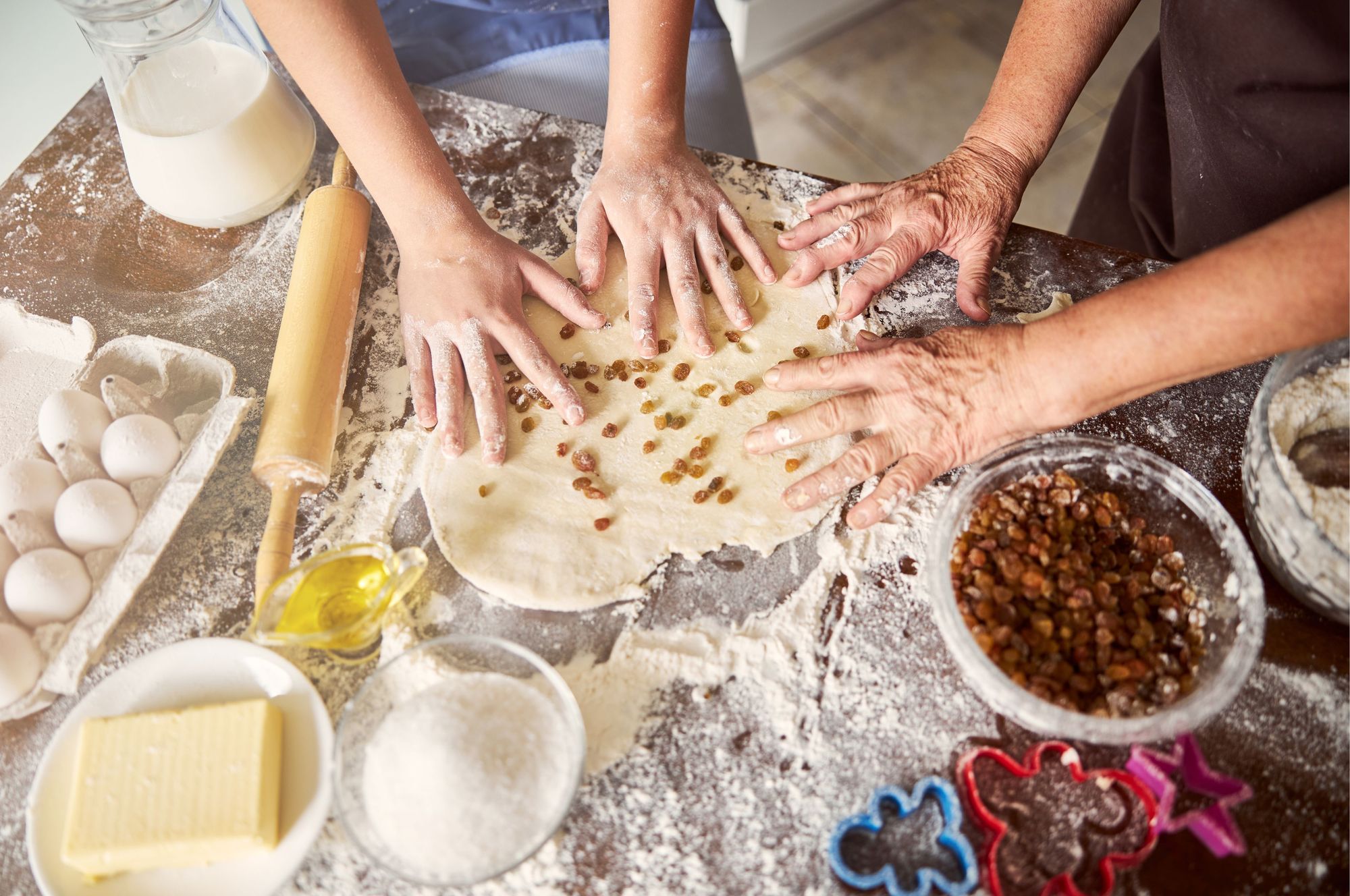
In the realm of culinary artistry, exploring global cuisines is akin to embarking on a grand adventure, a journey through diverse flavors, techniques, and cultural traditions. Each cuisine is a unique tapestry of ingredients, cooking methods, and storytelling, offering a glimpse into the heart of its culture.
Culinary Tapestry: The Diversity of Global Cuisines
The world is a culinary kaleidoscope, with each region boasting its own unique culinary identity. From the aromatic spices of India to the delicate balance of sweet and sour in Chinese cuisine, each dish tells a story of its origins, its people, and their connection to food.
- Indian Cuisine: A symphony of spices, Indian cuisine is renowned for its vibrant flavors, from the fiery heat of curries to the subtle warmth of garam masala. Dishes like butter chicken, vindaloo, and saag paneer showcase the intricate interplay of spices and aromatics.
- Chinese Cuisine: A delicate balance of flavors, Chinese cuisine is characterized by its emphasis on freshness, harmony, and balance. Dishes like stir-fries, dumplings, and dim sum exemplify the art of balancing sweet, sour, salty, bitter, and umami flavors.
- Italian Cuisine: A celebration of rustic simplicity, Italian cuisine is known for its fresh, seasonal ingredients and deceptively simple dishes that showcase the true essence of the ingredients. Pizza, pasta, and risottos are testaments to the power of simplicity in Italian cuisine.
- Mexican Cuisine: A fiery fiesta of flavors, Mexican cuisine is characterized by its bold use of spices, chilies, and fresh ingredients. Tacos, enchiladas, and guacamole embody the vibrant flavors and cultural
The Art of Seasoning: Crafting Harmonious Flavor Profiles
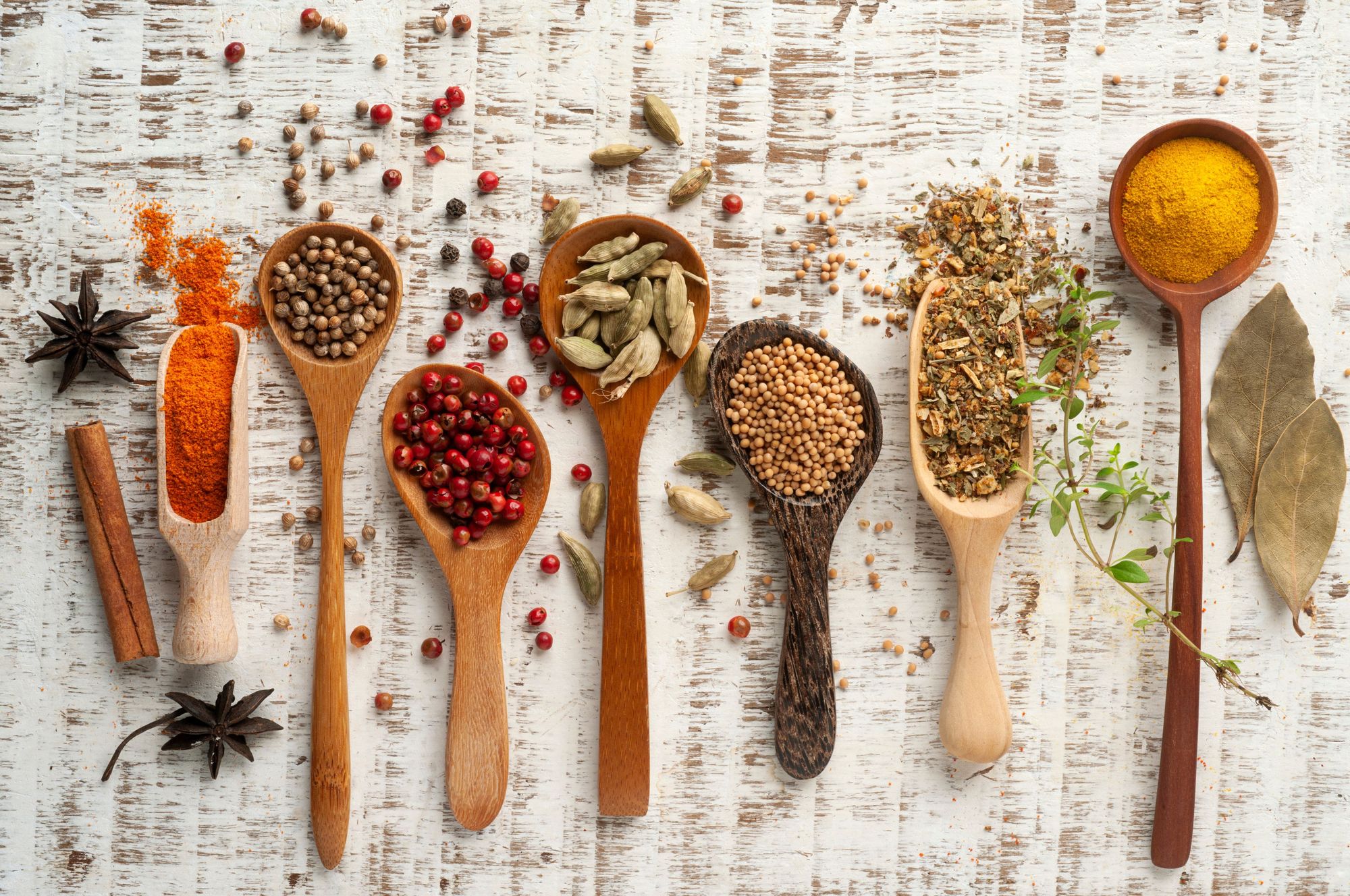
In the realm of culinary artistry, seasoning is the maestro's wand, orchestrating the symphony of flavors that awakens the palate. Just as a musician carefully balances each note to create a harmonious melody, a chef meticulously blends seasonings to achieve a well-rounded and balanced flavor profile.
The Five Pillars of Flavor: A Culinary Compass
The human palate is capable of detecting five fundamental tastes: sweet, sour, salty, bitter, and umami. Understanding the interplay of these tastes is essential for crafting harmonious flavor profiles.
- Sweet: Sweetness is often associated with sugar, but it can also be found in naturally sweet ingredients like fruits, vegetables, and honey. Sweetness can balance bitterness, enhance sourness, and add depth to savory dishes.
- Sour: Sourness adds a tangy brightness to dishes, cutting through richness and stimulating the appetite. Citrus fruits, vinegar, and fermented foods are common sources of sourness.
- Salty: Salt is the cornerstone of seasoning, enhancing the natural flavors of ingredients and adding depth and complexity to dishes. Sea salt, kosher salt, and Himalayan salt offer different flavor profiles and textures.
- Bitter: Bitterness can be perceived as unpleasant in excess, but when used sparingly, it can add complexity and balance to dishes. Dark chocolate, coffee, and some vegetables provide subtle bitterness.
- Umami: Umami, often described as a savory or meaty flavor, is the fifth taste sensation. It is found in foods like mushrooms, tomatoes, aged cheeses, and soy sauce. Umami enhances the overall flavor profile, adding depth and complexity.
Seasoning Techniques: The Culinary Maestro's Toolkit
A repertoire of seasoning techniques is essential for creating harmonious flavor profiles. Master the following techniques to elevate your culinary creations:
- Salt Timing: Salt early for even distribution or late for a concentrated flavor impact.
- Layering Spices: Build flavor by adding spices in stages, starting with aromatics and gradually adding hotter spices.
- Herbs vs. Spices: Use fresh herbs for a bright, herbaceous flavor and dried herbs for a more intense, concentrated flavor. Spices generally have a longer shelf life than herbs.
- Acid Balance: Use acidic ingredients like lemon juice, vinegar, or yogurt to cut through richness and brighten flavors.
- Taste as You Go: Season gradually, tasting as you go, to avoid over-seasoning. Trust your palate and adjust seasonings to your liking.
Creating Flavorful Profiles: A Culinary Symphony
Seasoning is not about adding a single flavor but rather creating a harmonious balance that showcases the symphony of flavors within a dish.
- Complementary Flavors: Pair complementary flavors, such as sweet and sour, salty and bitter, or sweet and savory, to create a well-rounded flavor profile.
- Contrasting Flavors: Use contrasting flavors, such as sweet and bitter, salty and sweet, or sour and savory, to create a dynamic and engaging culinary experience.
- Regional Cuisines: Explore the seasoning profiles of different cuisines to expand your culinary repertoire and discover new flavor combinations.
By mastering the art of seasoning, you become a culinary maestro, crafting harmonious flavor profiles that awaken the palate and elevate your dishes to new heights of culinary artistry.
Mastering Essential Sauces: A Culinary Foundation

In the realm of culinary artistry, mastering essential sauces is akin to a musician mastering the scales and chords that form the foundation of music. Sauces are the versatile building blocks of culinary creations, adding depth, richness, and complexity to dishes. They can transform simple ingredients into culinary masterpieces, elevating the dining experience and showcasing the chef's culinary expertise.
The Culinary Power of Sauces
Sauces are not mere condiments; they are the culinary glue that binds ingredients together, creating a cohesive and harmonious dish. They add moisture, enhance flavors, and provide a visual appeal that elevates the presentation. Sauces can be simple or complex, ranging from a basic pan sauce to a rich and velvety béchamel.
Essential Sauces: The Culinary Toolkit
A repertoire of essential sauces is the cornerstone of any chef's culinary toolkit. These sauces serve as the foundation for countless dishes, providing a versatile base for experimentation and creativity. Master the following essential sauces to expand your culinary repertoire and elevate your dishes:
| Sauce | Description |
|---|---|
| Béchamel | a creamy white sauce made from milk, butter, and flour, béchamel is the base for countless dishes, including lasagna, croque monsieur, and mac and cheese. |
| Tomato sauce | a versatile sauce made from tomatoes, herbs, and spices, tomato sauce is a staple in italian cuisine and beyond. it can be used as a base for pasta dishes, pizzas, and stews. |
| Espagnole | a rich brown sauce made from stock, roux, and aromatics, espagnole is the foundation for sauces like demi-glace and bordelaise. it adds depth and complexity to meat and poultry dishes. |
Mastering the Art of Sauces
Mastering the art of sauces requires patience, practice, and a keen understanding of culinary techniques. Here are some essential tips for creating exceptional sauces:
- Roux: A roux is a mixture of cooked flour and fat that serves as the thickening agent for many sauces. Mastering roux techniques is crucial for achieving the desired consistency and texture.
- Stock: A flavorful liquid made from simmering bones, vegetables, and herbs, stock is the foundation for many sauces. Use high-quality stock for maximum flavor and depth.
- Seasoning: Seasoning is essential for balancing flavors and enhancing the overall taste of a sauce. Taste as you go and adjust seasonings to your liking.
- Finishing Touches: Finishing touches, such as adding butter, cream, or herbs, can elevate a sauce from ordinary to extraordinary. Experiment with different finishing touches to create unique flavor profiles.
Sauces: The Culinary Maestro's Signature
Mastering essential sauces is a culinary journey that rewards you with the ability to create dishes that are both flavorful and visually stunning. Sauces become your culinary signature, a testament to your skill and artistry in the kitchen.
With practice, patience, and a passion for culinary exploration, you can transform simple ingredients into extraordinary dishes, all thanks to the power of mastering essential sauces.
From Home Cooking to Culinary Masterpieces: Replicating Restaurant-Quality Dishes
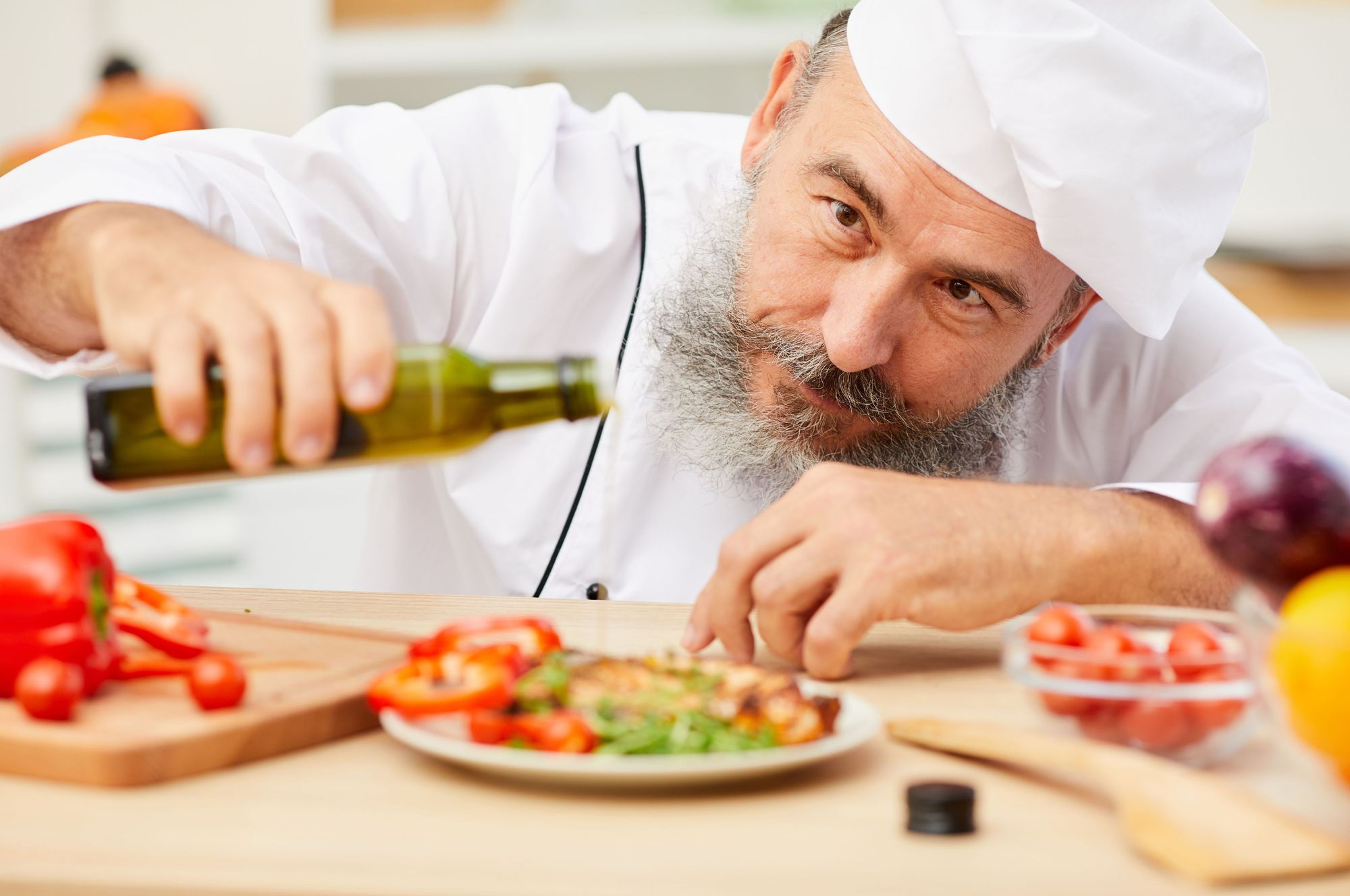
In the realm of culinary artistry, replicating restaurant-quality dishes at home is akin to a musician transcribing a complex symphony for a solo performance. It requires a deep understanding of culinary techniques, a keen eye for detail, and a passion for creating exceptional dining experiences.
The Essence of Restaurant-Quality Cuisine
Restaurant-quality cuisine is not just about using expensive ingredients or mastering complex techniques; it's about capturing the essence of a dish, the harmony of flavors, and the meticulous attention to detail that elevates a meal from ordinary to extraordinary.
- Flavor Profiles: Restaurant-quality dishes are characterized by well-balanced flavor profiles, showcasing the interplay of sweet, sour, salty, bitter, and umami.
- Texture: Each component of a dish is cooked to perfection, achieving the desired texture, whether it's the tender crispness of vegetables, the juicy sear of meat, or the delicate fluffiness of rice.
- Plating and Presentation: Restaurant-quality dishes are not just about taste; they are visual masterpieces, carefully arranged on plates to enhance their appeal and create an engaging dining experience.
Replicating Restaurant-Quality Dishes: A Culinary Journey
Replicating restaurant-quality dishes at home is a culinary journey that requires patience, practice, and a willingness to learn from experienced chefs.
- Deconstructing Recipes: Break down restaurant-quality recipes into manageable steps, analyzing each component and understanding the techniques involved.
- Mastering Techniques: Practice essential culinary techniques, such as knife skills, sautéing, braising, and making sauces, to achieve the same level of precision and expertise as experienced chefs.
- Experimentation and Personalization: Experiment with recipes, adjusting ingredients and techniques to suit your personal preferences and taste.
Essential Tools and Equipment: The Culinary Arsenal
Invest in high-quality tools and equipment that will enhance your ability to replicate restaurant-quality dishes at home.
- Cookware: Invest in a set of high-quality stainless steel cookware, including pots, pans, and a sauté pan. These versatile pieces will serve as your culinary foundation.
- Knife Set: A well-maintained knife set is essential for efficient and precise ingredient preparation. Invest in a chef's knife, a paring knife, and a serrated knife.
- Cutting Board: A durable, non-porous cutting board is crucial for maintaining hygiene and preventing cross-contamination.
- Measuring Tools: Accurate measuring is essential for consistent results. Invest in a set of measuring cups and spoons for precise ingredient proportions.
The Culinary Maestro's Signature: Replicating with Flair
As you progress on your culinary journey, you'll develop your own signature style, incorporating your personal flair and creativity into your replications of restaurant-quality dishes.
- Seasonal Adaptations: Adapt recipes to incorporate seasonal ingredients, adding freshness and vibrancy to your dishes.
- Global Fusion: Experiment with global flavors and techniques, fusing culinary traditions to create unique and innovative dishes.
- Personal Touches: Personalize dishes with your own signature touches, such as using homemade sauces, incorporating special ingredients, or developing unique plating techniques.
Replicating restaurant-quality dishes at home is not just about following recipes; it's about embracing the culinary journey, honing your skills, and expressing your creativity. With dedication and a passion for cooking, you'll soon be creating exceptional dishes that rival those found in fine dining establishments.
The Culinary Maestro's Legacy: Sharing the Joy of Cooking
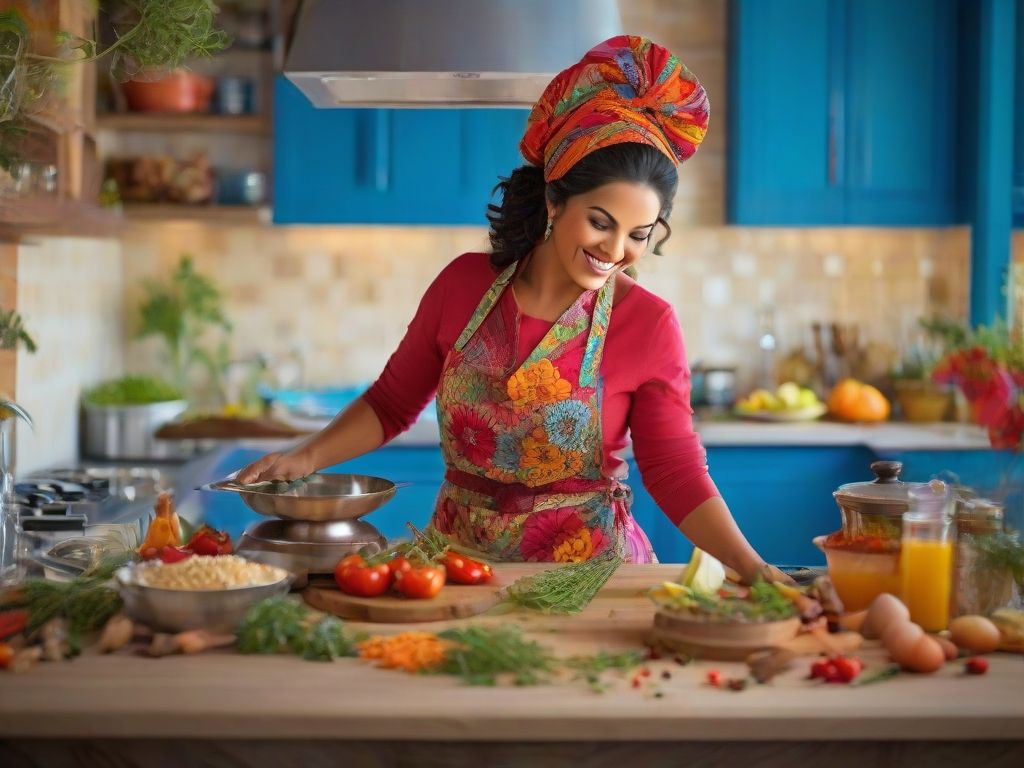
In the realm of culinary artistry, sharing the joy of cooking is akin to a musician sharing their gift with an audience, spreading the transformative power of music to touch hearts and inspire souls. Similarly, a culinary maestro shares their knowledge, passion, and creativity with others, fostering a love for food and cooking that enriches lives and creates lasting connections.
The Transformative Power of Cooking
Cooking is more than just preparing sustenance; it's an art form, a creative outlet, and a way to express love and care. Sharing the joy of cooking with others amplifies these benefits, creating a sense of community, fostering meaningful connections, and passing on culinary traditions that span generations.
- Community Building: Cooking together brings people together, breaking down barriers and creating a shared experience that transcends differences. Through cooking, individuals connect on a deeper level, fostering friendships, camaraderie, and a sense of belonging.
- Cultural Preservation: Cooking preserves and celebrates cultural traditions, passing down recipes, techniques, and culinary wisdom from one generation to the next. It's a way to connect with heritage, honor ancestors, and keep cultural traditions alive.
- Education and Empowerment: Sharing cooking knowledge empowers others to make informed food choices, develop healthy cooking habits, and gain confidence in their culinary abilities. It promotes self-sufficiency, encourages creativity, and instills a lifelong love for food.
Sharing the Culinary Gift: A Maestro's Legacy
A culinary maestro's legacy extends beyond creating exceptional dishes; it lies in the act of sharing their gift with others, inspiring and empowering them to embark on their own culinary journeys.
- Mentoring and Guidance: Experienced chefs can mentor aspiring cooks, providing guidance, sharing techniques, and fostering a supportive learning environment. This mentorship fosters a culture of continuous learning and encourages the pursuit of culinary excellence.
- Teaching and Demonstrations: Culinary expertise can be shared through teaching classes, conducting demonstrations, and hosting workshops. These platforms provide opportunities to share knowledge, inspire others, and promote culinary education.
- Culinary Writing and Recipes: Sharing recipes, writing cookbooks, and contributing to culinary publications allow chefs to reach a wider audience, spreading their culinary knowledge and inspiring others to explore new flavors and techniques.
The Ripple Effect: Inspiring a Culinary Renaissance
Sharing the joy of cooking creates a ripple effect, inspiring others to explore their culinary potential and transforming communities into vibrant hubs of culinary creativity.
- Culinary Clubs and Groups: Culinary clubs and groups provide a platform for individuals to connect, share recipes, and engage in hands-on cooking experiences. These gatherings foster a sense of community, promote culinary experimentation, and encourage the exchange of ideas.
- Food Festivals and Events: Food festivals and events celebrate the diversity and richness of culinary traditions, showcasing local cuisines, innovative techniques, and the passion of home cooks and professional chefs alike. These events inspire creativity, promote culinary tourism, and foster a sense of community around food.
- Social Media and Culinary Inspiration: Social media platforms have become a powerful tool for sharing culinary inspiration, connecting food enthusiasts, and showcasing the creativity and talent of home cooks and professional chefs alike. This digital community fosters a global culinary exchange, promoting new trends and techniques.
By sharing the joy of cooking, culinary maestros leave a lasting legacy, inspiring generations to come to embrace food as a source of creativity, connection, and celebration. Through sharing their knowledge, passion, and expertise, they transform communities into hubs of culinary artistry, where food becomes a bridge between cultures, a catalyst for creativity, and a testament to the transformative power of cooking.
Final Thoughts
As we conclude this culinary journey, let's reflect on the transformative power of cooking and the art of mastering essential culinary skills. From understanding the anatomy of a knife to mastering essential sauces, each section has unveiled the secrets and techniques that elevate ordinary meals into extraordinary culinary experiences.
The path to culinary mastery is a journey of continuous learning, exploration, and refinement. It's about embracing the symphony of flavors, understanding the interplay of ingredients, and appreciating the nuances of each technique.
Embark on this culinary adventure and discover the joy of cooking, the thrill of experimentation, and the satisfaction of creating dishes that nourish and delight. Embrace the culinary maestro within you, and transform your kitchen into a stage for culinary artistry.
As a final piece of advice, remember that cooking is a journey, not a destination. Enjoy the process, experiment with flavors, and savor the satisfaction of creating something truly special.